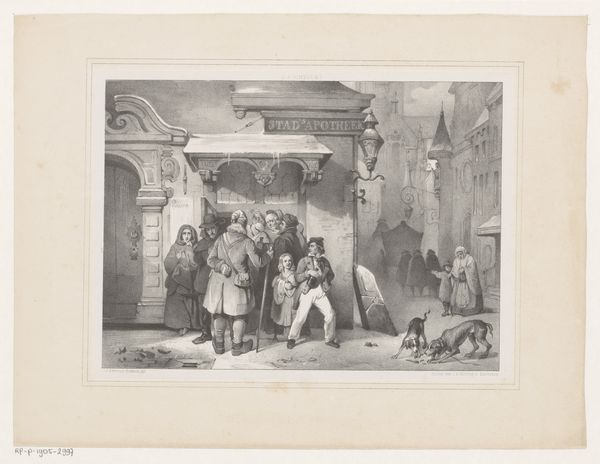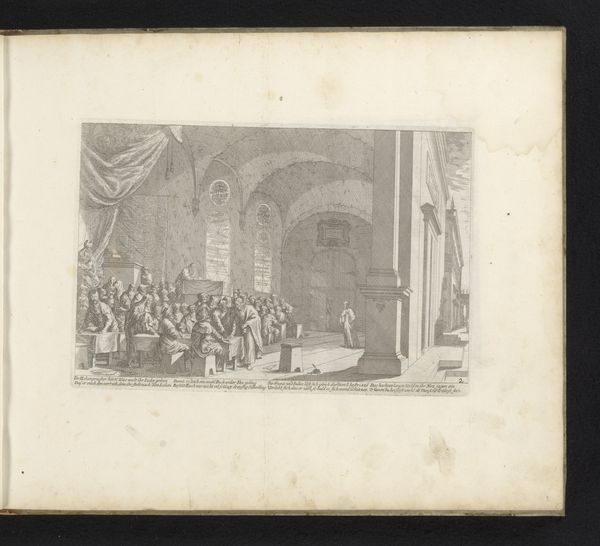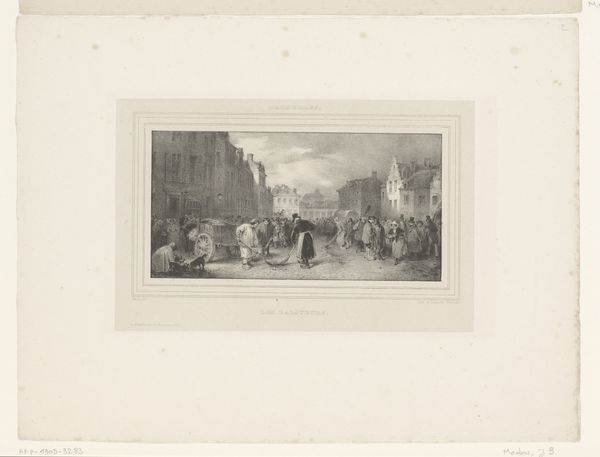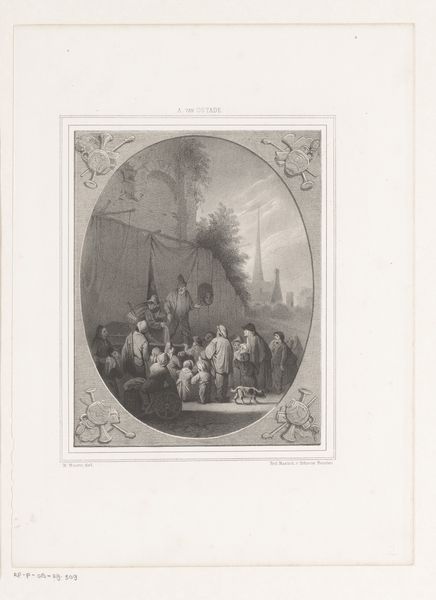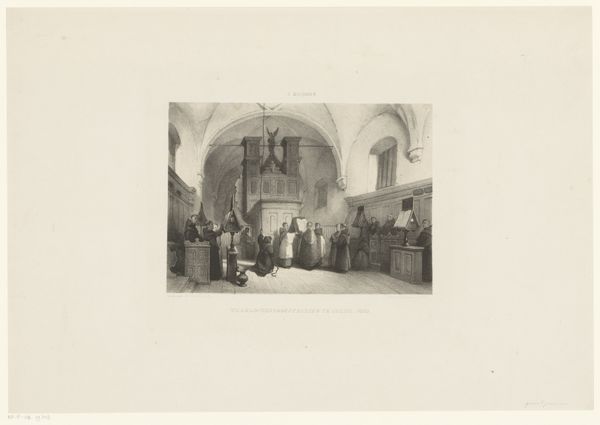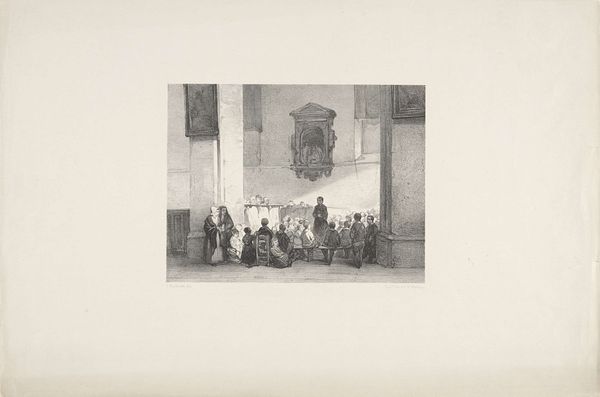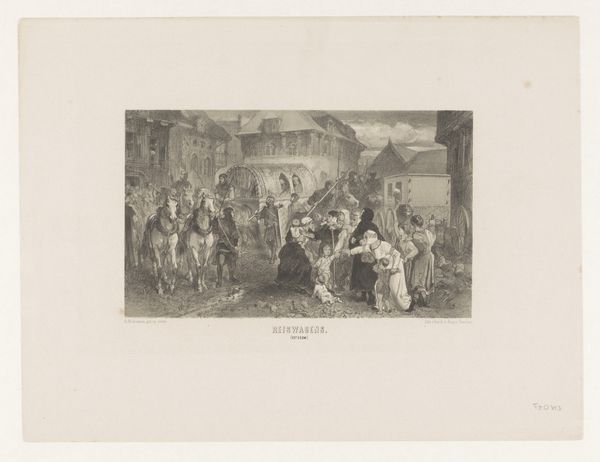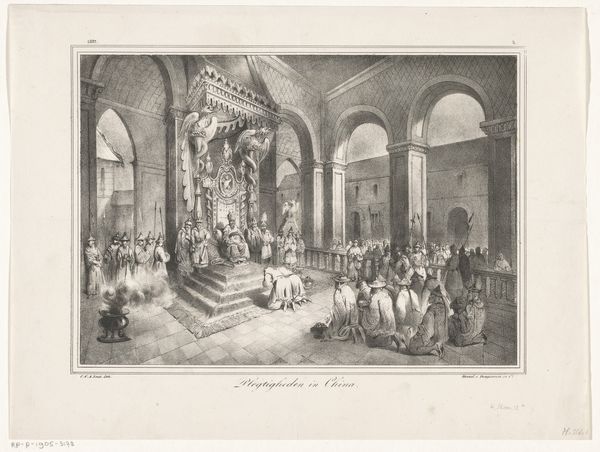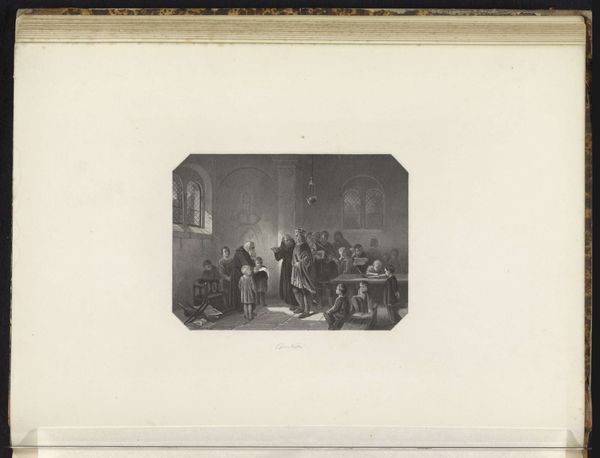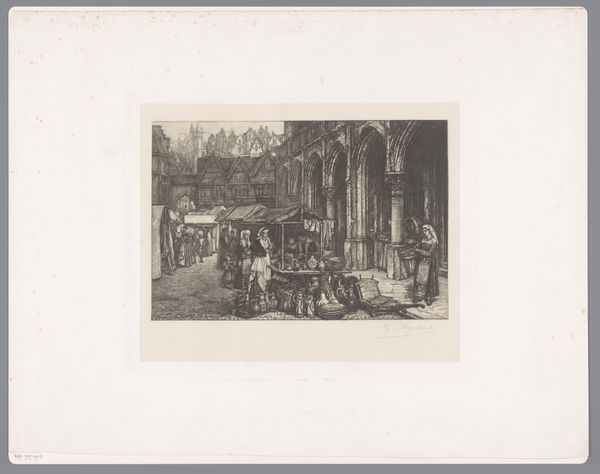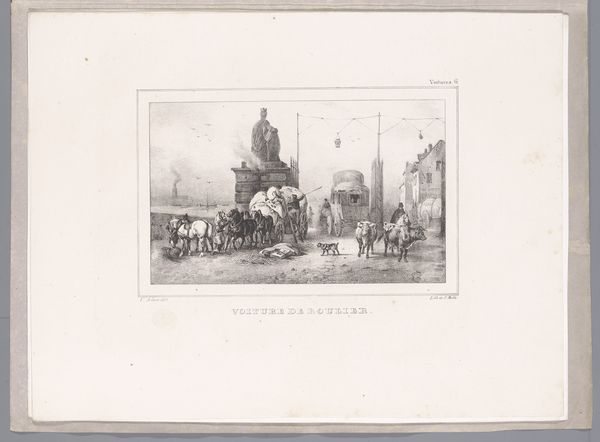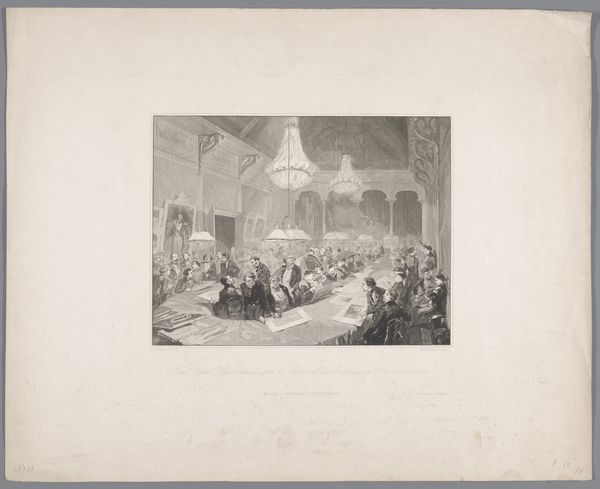
print, etching
# print
#
etching
#
romanticism
#
cityscape
#
genre-painting
Dimensions: height 244 mm, width 343 mm
Copyright: Rijks Museum: Open Domain
Curator: Charles Rochussen's "Voorbereidingen voor een feest," an etching dating from before 1846. What springs to mind when you observe it? Editor: Pure bustling anticipation! The flurry of activity, the theatrical stage being constructed… it all sings of an impending joyful eruption. You can almost hear the tuning of instruments and the rising chatter of a crowd. Curator: The composition skillfully guides our gaze. The convergence of lines toward the center stage creates a focal point amidst the chaotic energy. Note Rochussen's use of light and shadow to delineate forms and add depth. It’s more than just illustration; it's the construction of visual architecture. Editor: And within that architecture, what a human comedy unfolds. The monks chatting while a performer rehearses—everyone caught up in their little world. And look at the almost caricatured figures. It reminds me a bit of Hogarth, but with a Dutch restraint. There is commentary here, about hierarchy perhaps? Curator: Intriguing suggestion. Considering this etching originates within the Romanticism movement, might this arrangement point toward a yearning for an idyllic community, or a veiled critique of emerging bourgeois values, even class distinctions, that Romanticism often explores? Editor: Ooh, interesting… Yes, that fits well with what I felt but didn't fully articulate! The city as a theatre of human folly, gilded with fleeting moments of camaraderie before social divisions reassert themselves. Is it cynical, or simply observant? Curator: Its strength lies in its open-ended nature. We observe the layers –literal, symbolic, material– and derive our interpretations. Rochussen presents not a polemic, but a visual record pregnant with the complexity of 19th-century social dynamics. Editor: Exactly! It invites you to play detective. To peel back the layers and find not answers necessarily, but a richer set of questions. That, to me, is what makes it resonate, centuries later. It speaks of fleeting gatherings, then as much as it speaks of today.
Comments
No comments
Be the first to comment and join the conversation on the ultimate creative platform.
